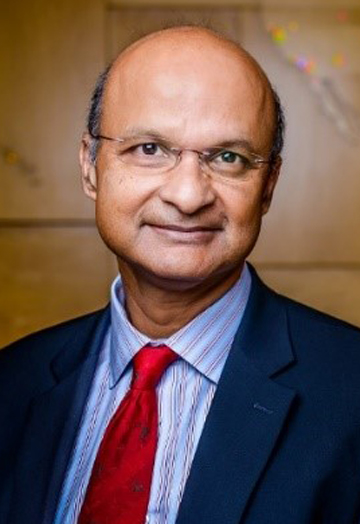 Emery Brown, MD, Ph.D.
Emery Brown, MD, Ph.D.
Professor, MIT & Harvard Medical School
Director, Harvard-MIT Health Sciences and Technology Program
TITLE(S)
Edward Hood Taplin Professor of Medical Engineering and of Computational Neuroscience, Massachusetts Institute of Technology
Professor of Health Sciences and Technology, Massachusetts Institute of Technology
Warren M. Zapol Professor of Anaesthesia, Harvard Medical School, Massachusetts General Hospital
Director, Harvard-MIT Health Sciences and Technology Program, MIT
Associate Director, Institute for Medical Engineering and Science, MIT
Investigator, Picower Center for Learning and Memory, Department of Brain and Cognitive Sciences, MIT
DEGREES
PhD in Statistics, Harvard University, 1988
MD, Harvard Medical School, 1987
AM in Statistics, Harvard University, 1984
BA, Harvard College, 1978
SELECTED AWARDS/SOCIETIES
2020 Swartz Prize for Theoretical and Computational Neuroscience
2019 Board of Trustees, Guggenheim Foundation
2019 Doctor of Science Honoris Causa, University of Southern California
2018 Dickson Prize in Science
2018 Member, Florida Inventors Hall of Fame
2017 Medaillon Lecture, Institute of Mathematical Statistics
2017 Severinghaus Lecture on Translational Science, American Society of Anesthesiologists
2016 Fellow, Institute of Mathematical Statistics
2015 Fellow, National Academy of Inventors
2015 American Society of Anesthesiologists Award for Excellence in Research
2015 Member, National Academy of Engineering
2015 Guggenheim Fellow in Applied Mathematics
2014 Member, National Academy of Sciences
2012 NIH Director’s Transformative Research Award
2012 Fellow, American Academy of Arts and Sciences
2011 National Institute of Statistical Science, Jerome Sacks Award
2008 Fellow, IEEE
2007 Member, National Academy of Medicine
2007 NIH Director’s Pioneer Award
2007 Fellow, American Association for the Advancement of Science
2006 Fellow, American Statistical Association
2006 Fellow, American Institute for Medical and Biological Engineering
2002 Member, Association of University Anesthesiologists
RESEARCH
Neural Signal Processing Algorithms
Recent technological and experimental advances in the capabilities to record signals from neural systems have led to an unprecedented increase in the types and volume of data collected in neuroscience experiments and hence, in the need for appropriate techniques to analyze them. Therefore, using combinations of likelihood, Bayesian, state-space, time-series and point process approaches, a primary focus of the research in my laboratory is the development of statistical methods and signal-processing algorithms for neuroscience data analysis. We have used our methods to characterize:
how hippocampal neurons represent spatial information in their ensemble firing patterns
analyze formation of spatial receptive fields in the hippocampus during learning of novel environments
relate changes in hippocampal neural activity to changes in performance during procedural learning
improve signal extraction from fMR imaging time-series
construct algorithms for neural prosthetic control the spiking properties of neurons in primary motor cortex
localize dynamically sources of neural activity in the brain from EEG and MEG recordings made during cognitive, motor and somatosensory tasks
measure the period of the circadian pacemaker (human biological clock) and its sensitivity to light
characterize the dynamics of human heart beats in physiological and pathological states
track brain states under general anesthesia
Understanding General Anesthesia
General anesthesia is a neurophysiological state in which a patient is rendered unconscious, insensitive to pain, amnestic, and immobile, while being maintained physiologically stable. General anesthesia has been administered in the US for more than 165 years and currently more than 100,000 people receive general anesthesia daily in this country for surgery alone. Still, the mechanism by which an anesthetic drug induces general anesthesia remains a medical mystery. We use a systems neuroscience approach to study how the state of general anesthesia is induced and maintained. To do so, we are using fMRI, EEG, neurophysiological recordings, microdialysis methods and mathematical modeling in interdisciplinary collaborations with investigators in HST, the Department of Brain and Cognitive Sciences at MIT, Massachusetts General Hospital, and Boston University. The long-term goal of this research is to establish a neurophysiological definition of anesthesia, safer, site-specific anesthetic drugs and to develop better neurophysiologically-based methods for measuring depth of anesthesia.
SELECTED PUBLICATIONS
A full list of Dr. Emery Brown’s publications can be found on PubMed.
 Guillermo Ameer, Ph.D.
Guillermo Ameer, Ph.D. AIMBE
AIMBE
 Emery Brown, MD, Ph.D.
Emery Brown, MD, Ph.D. Tejal Desai, Ph.D.
Tejal Desai, Ph.D. Omar Ishrak, Ph.D.
Omar Ishrak, Ph.D. Susan Margulies, Ph.D.
Susan Margulies, Ph.D. Joyce Wong, Ph.D.
Joyce Wong, Ph.D. Teresa K. Woodruff, Ph.D.
Teresa K. Woodruff, Ph.D. Milan Yager
Milan Yager
